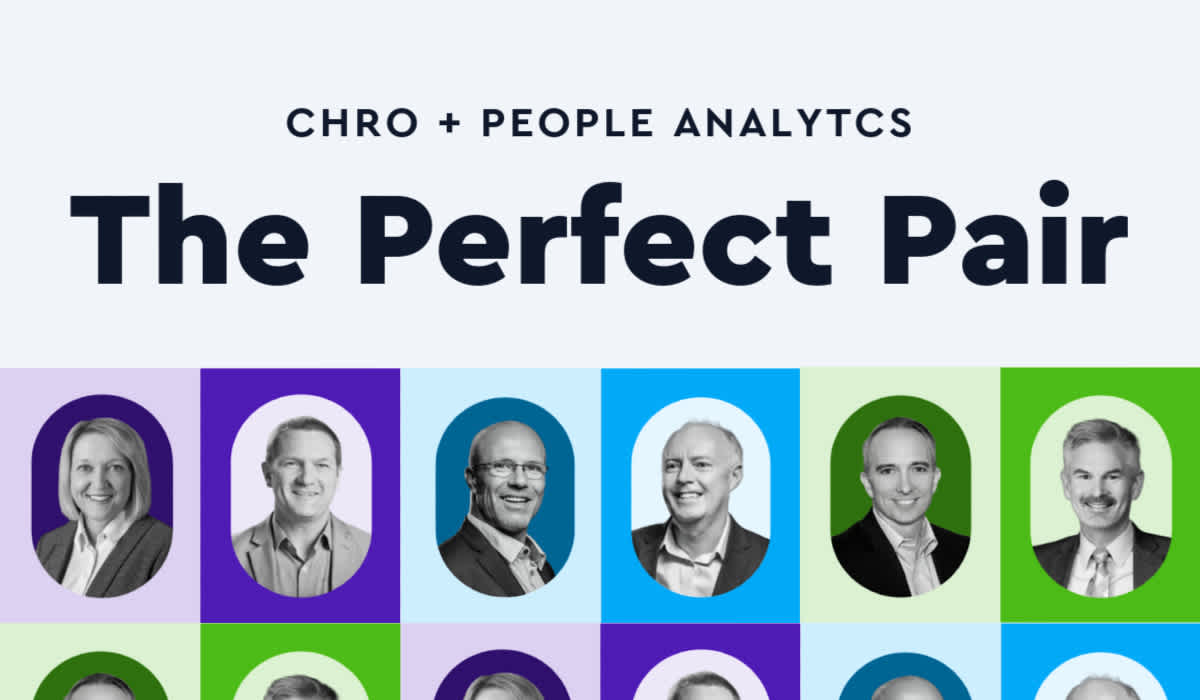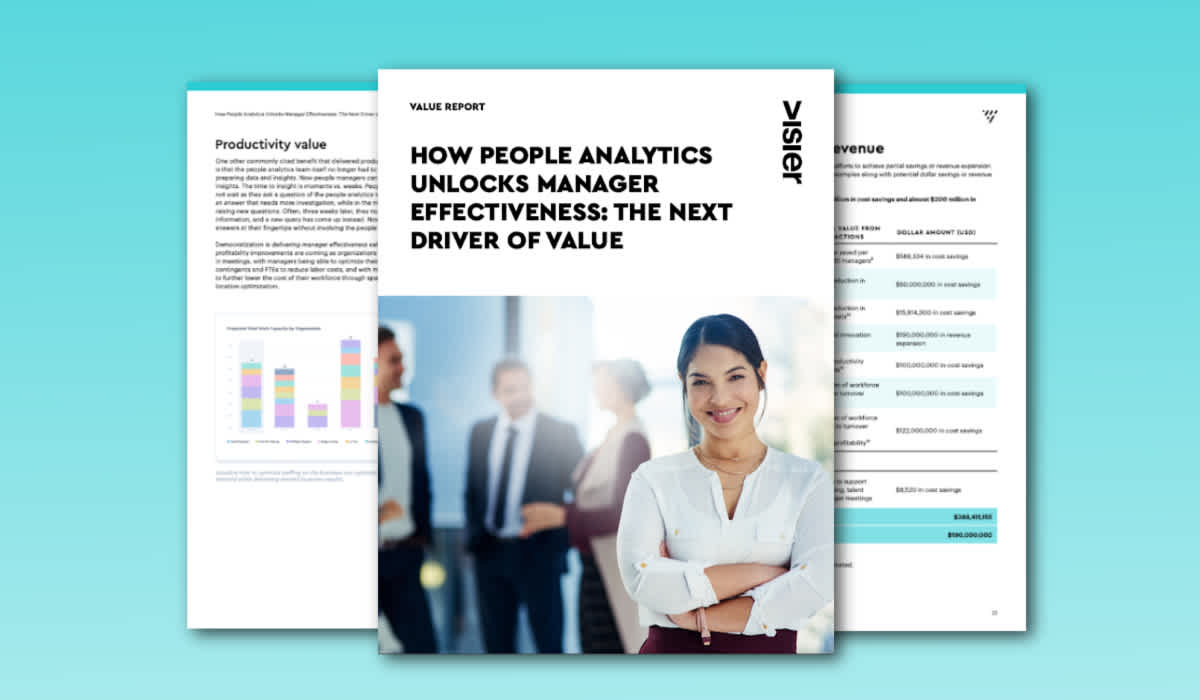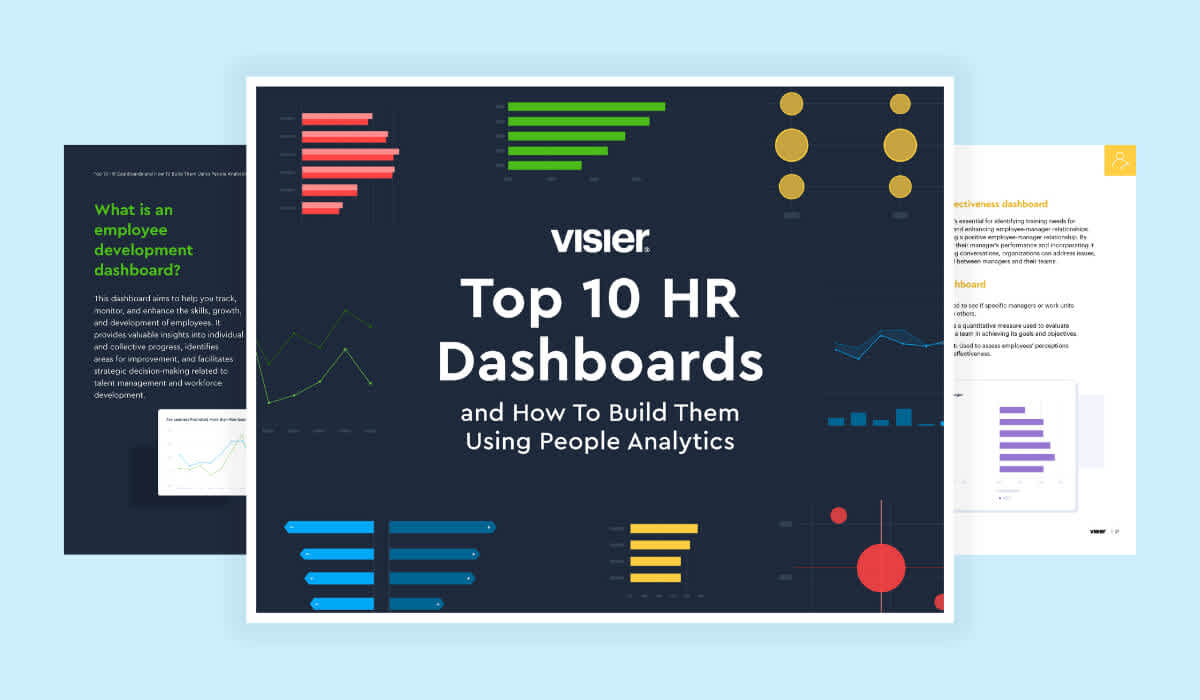Leverage People Analytics To Improve Manager Effectiveness
Manager effectiveness is the top priority for HR leaders in 2024 according to Gartner. Here's how people analytics can help.

The role of a manager is pivotal to business success. Managers who hire well and develop and retain top talent through their ability to lead, motivate, and empower their teams will directly impact the achievement of strategic objectives and business outcomes.
This is why manager effectiveness was named the top priority for HR leaders in 2024 by industry analyst, Gartner, who monitors the HR and economic landscape. Their annual report Top 5 Priorities for HR Leaders in 2024 offers actionable insights for HR leaders to elevate their efforts around manager effectiveness this year.
Here we take a deep dive into priority number one—manager effectiveness—and how people analytics is key to unlocking the power of this business-critical objective.

Gartner’s research reveals that 75% of HR leaders are overwhelmed with the changing nature of their job responsibilities; 73% agree that managers aren’t ready to lead the type of change that’s required to keep pace with technology, competition, and economic impacts.
The job of being a manager is increasingly difficult and increasingly ambiguous. One out of five managers say that they’d rather not be managers if they had the choice. This discontent impacts employees who feel the strain, too—only about half of employees say their managers treat them with empathy and fairness. For these reasons, and because managers are the most expensive employees at an organization who possess the greatest potential to make or break the business, the role of manager deserves a rethink and an evolution, according to Gartner.
Evolving the role of manager

Gartner says that enabling more effective managers isn’t only a matter of more training—acquiring new skills can’t reduce workload or streamline laborious processes, for instance. Instead, the very role of managers needs to be redefined to be more in line with the demands of today’s work landscape. They suggest four “critical actions” to evolve the job and we’ve added the ways people analytics enables success with this evolution.
1. How people analytics helps reset role expectations
Does the manager need to do everything to coach her team while ensuring business outcomes are met? Probably not. Understanding which actions have the highest impact on both employees and the business, and how they each impact one another, comes from understanding the metrics used to measure those actions.

To better understand the connection between people-related everyday decisions and the way they affect business results, consider using an analytics platform that pulls data from multiple sources to produce holistic insights based on employee and business data in order to answer questions like: “Do employees who receive more training achieve higher revenue per FTE?” and “If we reduce overtime on our factory floor, will it result in higher overall productivity and/or satisfaction scores among employees? That way, you can see how pulling different employee experience levers produces different results, such as better customer experience, and focus on those that move the needle the most.
2. How people analytics helps rebuild manager pipeline
Not everyone can or should be a manager. Those employees who aspire to the job of people leader should be exposed to what the role demands so they can make an educated decision about whether or not leadership is right for them. Those who don’t shy away from the toughest aspects of the job—longer hours, employee terminations, increased pressure to perform—may be the best candidates to stock the manager pipeline while also ensuring that new managers assume the role with their eyes wide open.

The career paths visualization shows which roles have successfully been promoted to manager in the past
Since being a manager is a tough position, it's important to consider historical data when you're looking at who may be promoted into a managerial role. A career paths visualization like the one above shows which roles have successfully been promoted to managers in the past, providing data-backed evidence of who may be the best fit (along with other traits of known effective managers like skills, education, tenure, and so on.) Visualizing the manager pipeline is key to successful succession planning.

3. How people analytics helps rewire manager habits
It seems obvious that knowing daily expectations and performing a routine would relieve a lot of stress managers often feel, wondering “Am I doing this right?” or “Is this the most efficient use of my time?” Yet, managers are often expected to set their own priorities and create schedules for both themselves and their teams—it’s part of the job. Gartner states that organizations that focus on “habit-building” improve job manageability by a whopping 71%.

Use people analytics to see which managers have the highest high-performer resignation rate and then drill down into individual traits to understand the underlying reasons
People analytics provides insights into manager behaviors like hours spent in training or PTO days taken and the associated impact on team performance, employee engagement, and organizational outcomes—this helps identify areas for improvement and informs targeted interventions. By analyzing data to identify patterns and trends in manager behavior and their correlation with key performance metrics, people analytics equips leaders to understand how their behaviors over time affect business outcomes.
4. How people analytics helps remove process hurdles
Becoming bogged down by unproven processes is not only bad for productivity, but it’s also a drain on team morale. Identifying what Gartner refers to as “low-value rules” that plague the manager/employee relationship may not be easy if employees hesitate to voice dissatisfaction and are downright difficult to determine without data insights providing clues as to which manager behaviors impact the team—and the business.
People analytics equips business leaders with the insights to make data-backed decisions about where to invest time and effort for maximum business impact. For instance, understanding the effect of learning and development on customer satisfaction scores reveals which departments or roles benefit the most from L&D programs—and which do not.

For a larger view, people analytics provides the ability for HR leaders to measure the effectiveness of their managers through a manager effectiveness dashboard consisting of metrics like high-performance resignation rate, promotions rate, absence data per FTE, coaching equity, and more.
To elevate manager effectiveness, measure what matters
Leveraging people analytics presents the most effective means for enhancing manager effectiveness by providing data-driven insights into manager behaviors and their impact on team performance and organizational outcomes. Through detailed analysis of patterns and trends in manager behavior, organizations can identify areas for improvement and pinpoint the traits of the most effective managers in order to replicate and scale those behaviors throughout the business. By leveraging people analytics, organizations can optimize manager effectiveness, foster a positive work environment, and drive overall organizational success.



